Ignorance of the features of the installation of roofing materials can lead to errors in the installation and repair of the roof. This can be avoided if you have extensive experience in construction. But if you are new to this business, then instructions for laying the material may not be enough. And roofing is a matter in which it is better to learn from the mistakes of others. Therefore, before starting installation, you should familiarize yourself with the most common of them.
Content
Types of errors
Regardless of which roofing material you decide to use, all the possible errors that arise during installation or repair of the roof are divided into three groups:
- Errors resulting from ignorance of the installation technique and components. They are the most common and account for 80 percent of the shortcomings that may arise during operation. This often happens due to the inexperience of the workers. Each roofing material has its own installation features, which may not be studied before the start of work. Therefore, it is important to hire trusted professionals, and for self-repair and installation, follow the relevant instructions.
- Errors resulting from incorrect design.
- Mistakes related to the culture of production work.
General installation errors
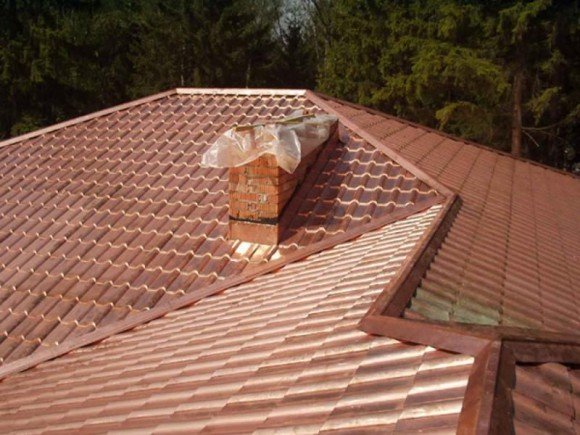
- If the composition of the roofing pie includes a heater, which is used as a common mineral wool, then it is worthwhile to understand that if the structure is not properly organized, moisture accumulation can form. It is important to equip such an insulated roof with hydro- and vapor barrier films or membranes. We must not forget about the provision of ventilation. This can be done in the ridge and cornice ventilation products, windshields and roof fans. If there are additional decorative elements on the roof, for example, a skylight, parapet or attic, ventilation gaps begin to work incorrectly. In order for the air to perform its functions, it will be necessary to increase the height from the usual 5 cm to 15 at the site of narrowing. In this case, the appearance of the roof may be affected due to the adjustment of the rafter system.
- A roof with a slope of less than 10 degrees may not have the best effect on water removal. A stagnation of snow will gradually destroy the roofing.
- The presence of ventilation stands in valleys or across a slope can also disrupt the removal of water from the roof surface.
- Existence of eaves of too small width, having at the same time a small bias, can cause difficulties in placing a wall gutter. Even a big obstacle to the organization of the drain can be the windows of the lucarnes located on the cornice. In this case, the likelihood of smudges in the room is high.
- Attics and parapets can also create obstacles to the flow of water, if their architecture is massive enough.
- It is worth thinking about the organization of the drain in advance, because it may be necessary to place them on the main facade of the building, which will not affect the overall appearance of the house in the best way.
- It is important to consider certain features of the roofing material used. For example, when using steel, you need to keep in mind the possibilities of its expansion during heating. In hot climates, where the temperature in the summer can rise to +70 degrees, you can not design slopes more than 10 meters.If this can not be avoided, you can resort to the placement of temperature compensation elements, which may be steps.
- Engineering equipment at home leads to the formation of ventilation systems towering above the roofing. It is important to properly design this section to avoid the formation of piles on the roof.
- Errors can occur during the roof insulation process. The supporting frame may be located in a cold or warm area. In this case, the correct choice of the type of roof insulation will avoid the formation of “cold bridges”, as in the case of placing insulation material between steel rafters, which, by virtue of the laws of heat engineering, lead to the formation of heat loss.
- Monitoring the tightness of the vapor barrier layer will prevent the formation of wet spots on the ceiling. Especially often errors of this kind are found in places adjacent to the wall, roof window box, ventilation risers.
- The use of polyurethane foam on slopes or in the attic is another mistake of unfortunate roofers. Often it is used to provide fixation, heat and sound insulation, as well as to fill the voids. But such events can disrupt the full functioning of the roofing cake.
- Wrong choice of insulation thickness. In order not to be mistaken, preliminary special calculations are made and all roundings are performed upwards.
- Ignoring snow retention can damage the roofing.
- Lack of hydro- and vapor barrier films or membranes.
General repair errors
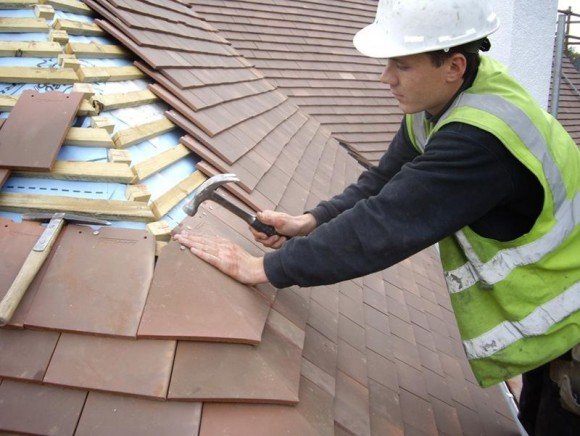
- Use for cutting sheets of metal grinder. Such an easy-to-use tool can lead to damage to the polymer coating and zinc by a heated abrasive disk, which subsequently is fraught with the formation of corrosion. And if you work at height, hot sparks can fly around the roof. This, of course, spoils the material and leads to the appearance of rusty smudges.
Electric scissors are better for working with metal tiles. Corrosion can also be avoided by using a jigsaw.
- Snow falling under the roof during the winter can occur due to the lack of a seal under the ridge. The heavy weight of snow masses can lead to the contact of the waterproofing film with insulation. The result of this error is the loss of materials of their properties, resulting in the formation of freezing, dampness and rotting of the roof structures.
- Poor-quality self-tapping screws, which are used when attaching sheets of roofing material, can disrupt the strength of the roof. Corrosion is formed as a result of loosening of fasteners and penetration of moisture into the under-roof space.
- When working with soft roofing materials, you need to carefully pay attention to all swellings, bubbles that may occur during repair in the weld areas.
- In the process of repairing a soft roof, it is also important to monitor the technology of its fusion by uniformly rolling the roll.
- Violation of the stacking sequence, the formation of places where the seams coincide.
Errors when working with tiles
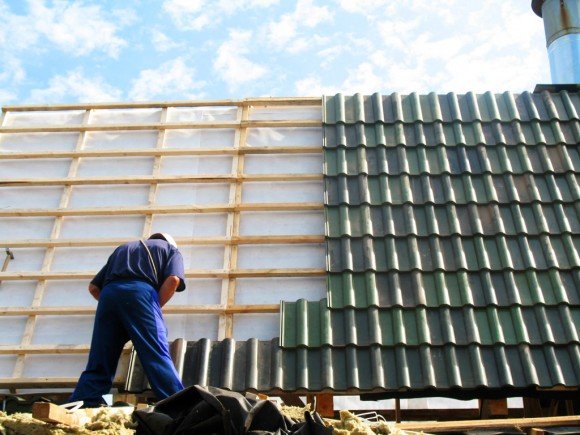
Ceramic tiles can be installed with a varying pitch of the battens on which the installation takes place. But it is important to observe her step on the roof slopes, otherwise such a mistake will be immediately visible.
This type of roof can not be too tightly attracted to the lathing. This error can lead to the formation of tension in the cold season, which leads to the destruction of the tiles. Do not stick special tape for abutments to a wall or pipe on a dirty surface. Poor adhesion will lead to places where water can enter the under-roof space. The tape cannot be used without a clamping level.In a house made of logs, appropriate solutions are also used to ensure that the tape adjoins the walls reliably.
Mistakes when working with roofing slate
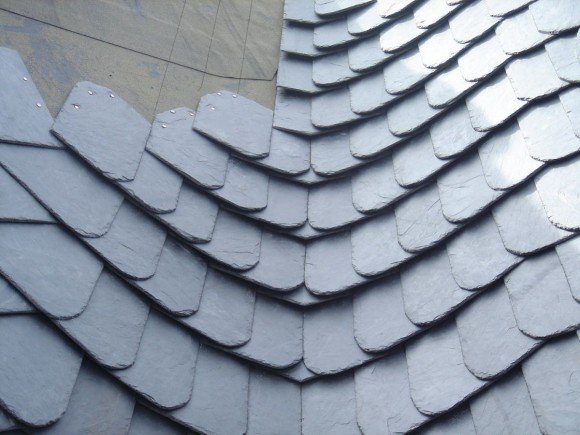
This material is gaining more and more popularity, but there are not enough good specialists in working with it. When using roofing slate, errors can occur even at the design stage - for example, the formation of two endows at one point or they are very narrow, as well as the ventilation pipe is too wide.
Failure to comply with the installation technology can lead to an ugly masonry, the scales of which will puff up and lie uneven.
Errors when working with a soft roof
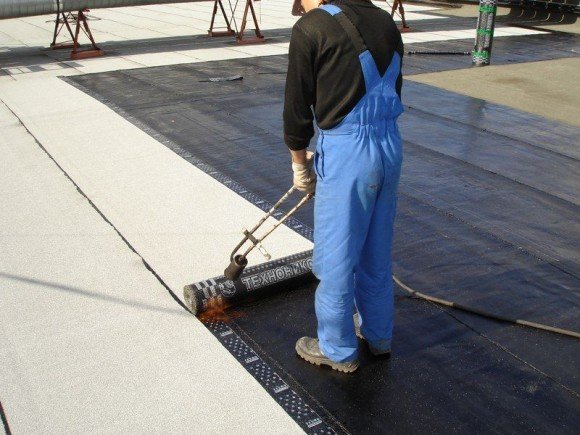
It is necessary to heat the material correctly. So, the bitumen-polymer soft roof will melt at 130 degrees, but the bitumen - at 80. For its installation, it is necessary to have a ramp from one and a half degrees. If there is an indicator film, it is heated to distortion. When working, it is necessary to monitor the humidity of the screed, which should not exceed four percent.
Lack of bitumen primer as a primer may result in poor adhesion.
Lack of overlapping when laying rolled soft roofing material. Failure to comply with the required parameters for applying cloths will also lead to incorrect operation of the roof and rapid wear of the material.
Errors when working with metal
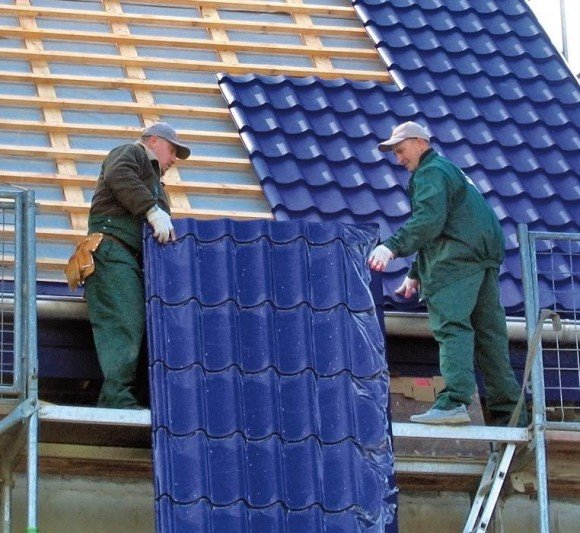
For sheet fasteners, it is necessary to use special self-tapping screws that have a sealing washer. But at the same time, the fasteners must be of high quality. Low-grade materials may lose their properties over time, rubber will dry out and quickly become brittle.
Mounting in the lower part of the wave, in the place where a tight fit of the material to the crate is formed - the only true way of installation. The rigidity of the metal is insufficient to ensure proper operation when screwing the screws into the upper part of the wave.
Using less than 6-8 screws per 1 sq.m. roofing - a common mistake during installation.

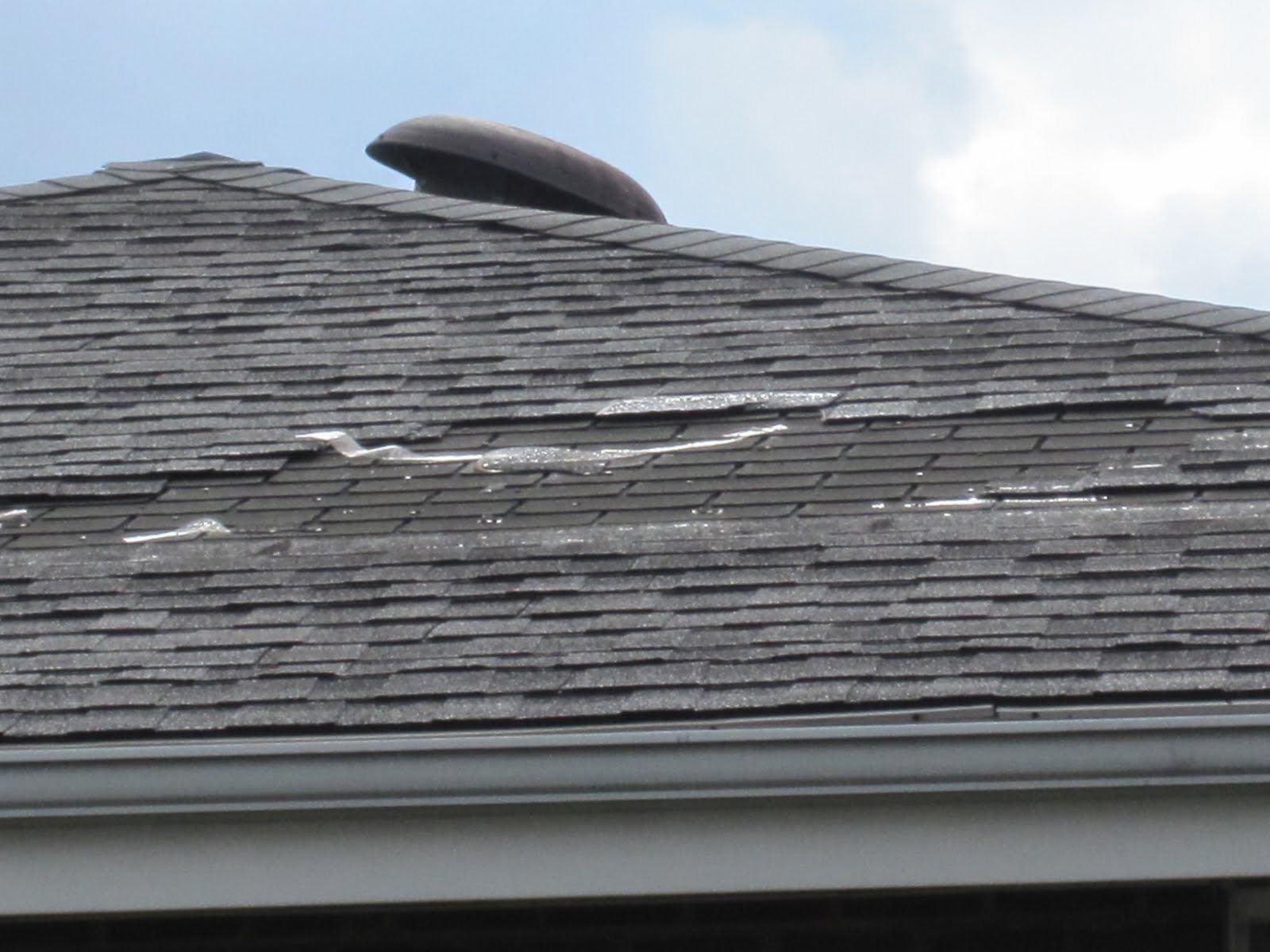
Maksim
I want to raise the topic about which pitched roof is better to cover more reliably.
Folding is understandably the most reliable and durable